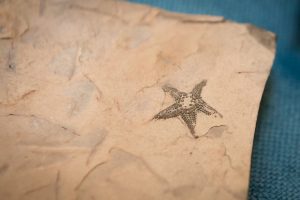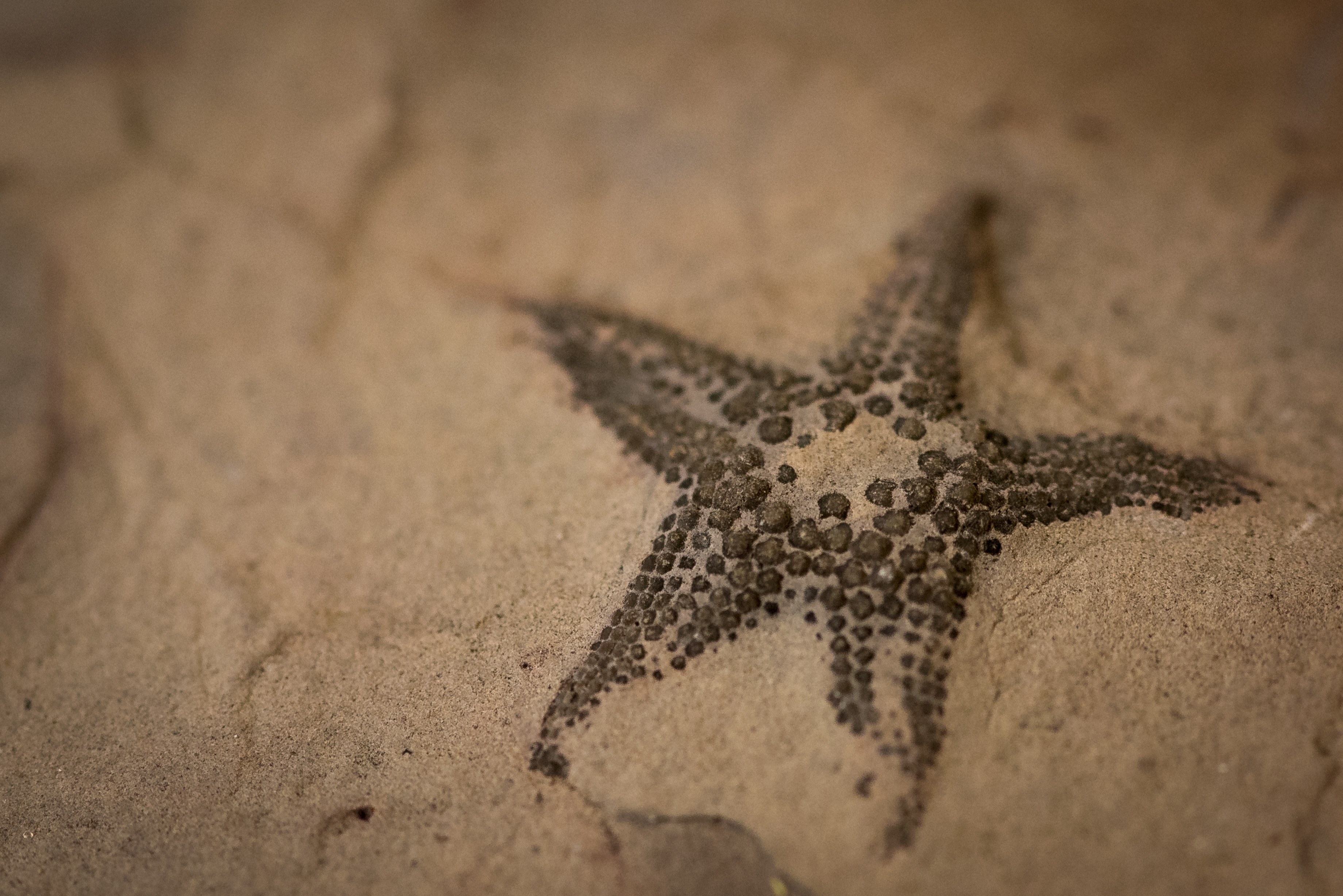
Starfish belong to a group of marine invertebrates known as echinoderms, which includes: sea urchins, sand dollars, brittle and basket stars, sea cucumbers and crinoids.
The fossil record for starfish and their ancestors dates back to the Cambrian time period, over 520 million years ago. It is difficult to pinpoint exactly when the first true starfish appeared because of the lack of complete fossils. The delicate nature of starfish means they tend to break apart into separate plates, known as ossicles, before fossilization can occur.
This fossil specimen of the carnivorous starfish Schuchertia in the Alabama Museum of Natural History collections represents one of the earliest known kinds of sea stars. Dating from the middle Ordovician, approximately 450 million years ago, it was found and collected by an amateur paleontologist in Bibb County from the Chickamauga Limestone. The Chickamauga Limestone is a geologic rock unit that is present throughout north Alabama and can be observed in roadside outcrops, including the Red Mountain Expressway.
During the middle Ordovician, most of Alabama was a shallow marine and/or tidal flat environment that was conducive for invertebrates like Schuchertia.
The Invertebrate Paleontology Collection is estimated to contain over 20,000 lots of specimens, mainly from the Oligocene, Eocene and Cretaceous deposits of Alabama. The Paleogene (Eocene plus Oligocene) deposits in Alabama are considered to be among the best in the world. The collection includes at least eight type specimens and is housed in the Mary Harmon Bryant Collections Facility.
Dr. Dana Ehret, curator of paleontology for The University of Alabama Museums, provided the above information.
